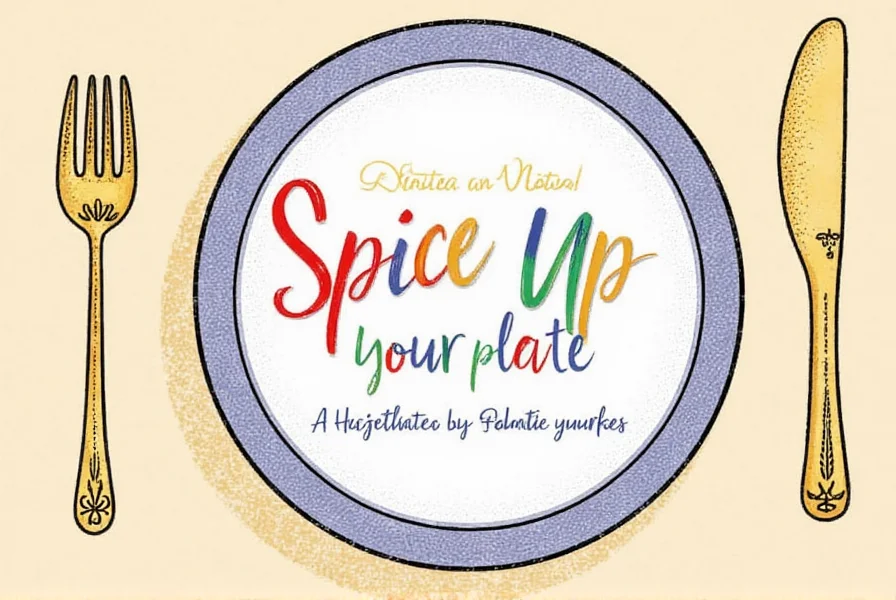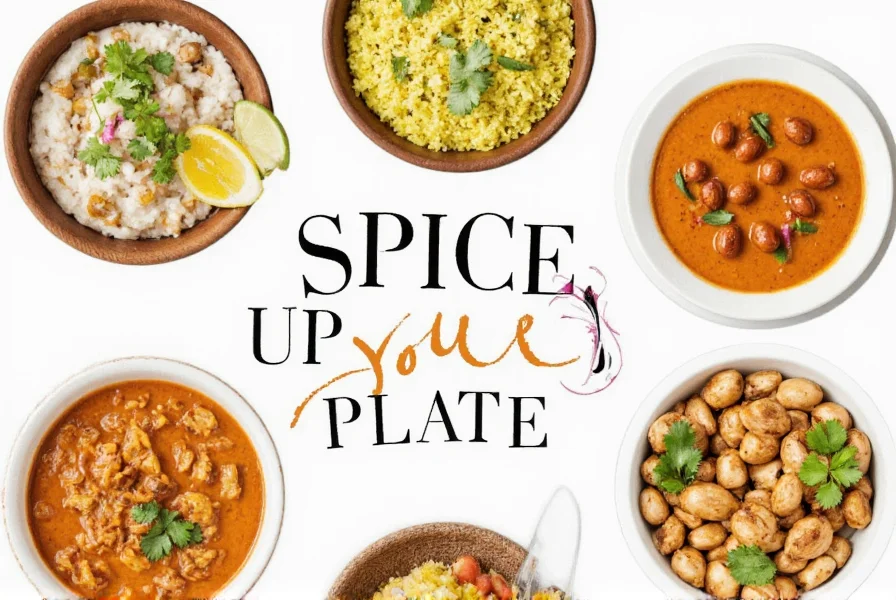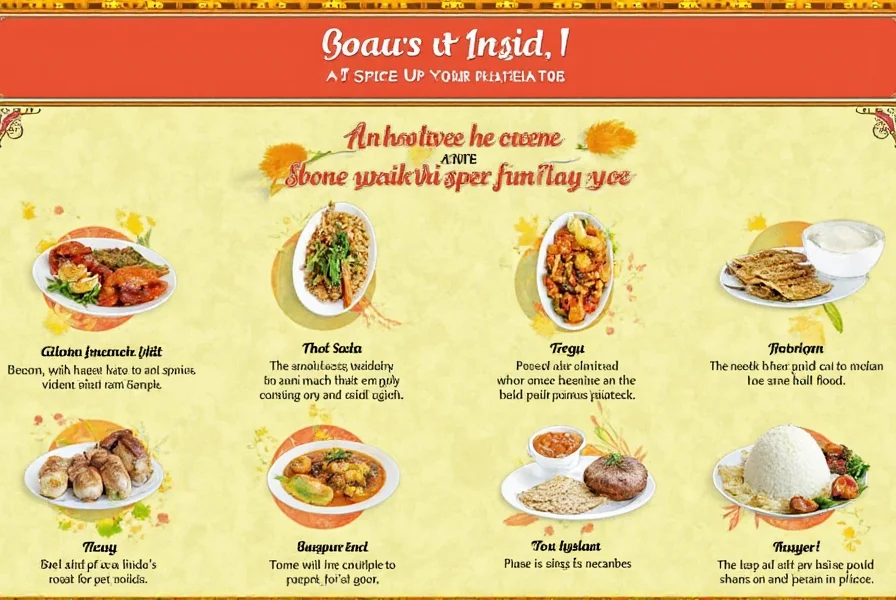Indian cuisine is broadly categorized into five main regional types, each with distinct ingredients, cooking techniques, and signature dishes. Here's a clear breakdown of the primary types of Indian dishes by region:
| Region | Main Ingredients | Signature Dishes | Flavor Profile |
|---|---|---|---|
| North India | Wheat, dairy (paneer, ghee), tomatoes, onions | Butter Chicken, Chole Bhature, Palak Paneer, Rogan Josh | Rich, creamy, mildly spicy with warm spices like cumin and garam masala |
| South India | Rice, lentils, coconut, tamarind, curry leaves | Dosa, Idli, Sambar, Rasam, Fish Curry | Tangy, coconut-based, moderate heat with mustard seeds and tamarind |
| East India | Rice, fish, mustard oil, poppy seeds, panch phoron | Machher Jhol, Shorshe Ilish, Chholar Dal, Rasgulla | Subtle sweetness, mustard-based, less spicy with fermented flavors |
| West India | Coconut, peanuts, jaggery, kokum, dried coconut | Dhokla, Vada Pav, Puran Poli, Goan Fish Curry | Sweet-savory balance, tangy with coconut and kokum |
| Street Food & Snacks | Chickpeas, potatoes, tamarind, chaat masala | Pani Puri, Bhel Puri, Aloo Tikki, Pav Bhaji | Crunchy, tangy, spicy with explosive flavors in small portions |
Below is a detailed exploration of each type of Indian dish:
North Indian Dishes
North Indian cuisine features wheat-based breads like naan and roti, dairy-rich gravies, and tandoor-cooked dishes. Key characteristics include:
- Uses paneer (cottage cheese), ghee, and yogurt as primary ingredients
- Common spices: cumin, coriander, garam masala, and turmeric
- Signature dishes: Butter Chicken (creamy tomato-based curry), Chole Bhature (spiced chickpeas with fried bread), Palak Paneer (spinach and cheese curry), Rogan Josh (Kashmiri lamb curry)

South Indian Dishes
South Indian cuisine centers on rice, lentils, and coconut-based dishes with tangy flavors:
- Uses rice, urad dal, and coconut milk as staples
- Common spices: mustard seeds, curry leaves, tamarind, and fenugreek
- Signature dishes: Dosa (fermented rice crepe), Idli (steamed rice cakes), Sambar (lentil vegetable stew), Rasam (peppery tomato soup)

East Indian Dishes
East Indian cuisine features subtle flavors with mustard oil and fish-based dishes:
- Uses mustard oil, poppy seeds, and panch phoron (five-spice blend)
- Common ingredients: rice, fish, and jaggery (unrefined sugar)
- Signature dishes: Machher Jhol (fish curry), Shorshe Ilish (hilsa fish in mustard sauce), Chholar Dal (chickpea lentil), Rasgulla (syrup-soaked cheese balls)
West Indian Dishes
West Indian cuisine balances sweet and savory with coconut-based preparations:
- Uses coconut, peanuts, kokum, and jaggery
- Common spices: coriander, cumin, and dried coconut
- Signature dishes: Dhokla (steamed chickpea cake), Vada Pav (potato burger), Puran Poli (sweet flatbread), Goan Fish Curry (coconut-based seafood curry)
Street Food & Snacks
Indian street food offers quick, flavorful bites with bold spice combinations:
- Uses chaat masala, tamarind chutney, and potatoes
- Common ingredients: chickpeas, puffed rice, and sev (crunchy noodles)
- Signature dishes: Pani Puri (spicy water-filled puris), Bhel Puri (puffed rice snack), Aloo Tikki (potato patties), Pav Bhaji (spiced vegetable mash)

Frequently Asked Questions
What are the five main regional categories of Indian dishes?
The five main regional categories are North Indian (wheat and dairy-based), South Indian (rice and lentil-based), East Indian (mustard oil and fish-based), West Indian (coconut and peanut-based), and Street Food & Snacks (spicy, quick bites).
How does North Indian cuisine differ from South Indian cuisine?
North Indian cuisine uses wheat-based breads and dairy-rich gravies, while South Indian cuisine centers on rice, lentils, and coconut. North Indian dishes are typically creamier with warm spices like garam masala, while South Indian dishes feature tangy flavors from tamarind and mustard seeds.
What are the key ingredients for authentic North Indian dishes?
Key ingredients include paneer (cottage cheese), ghee (clarified butter), tomatoes, onions, and spices like cumin, coriander, and garam masala. Dairy products are central to North Indian cooking.
Conclusion
Indian cuisine's diversity stems from its regional variations, with each area developing unique dishes based on local ingredients and traditions. From the creamy curries of North India to the tangy coconut-based dishes of the South, and the mustard-infused fish preparations of the East, each type of Indian dish offers a distinct culinary experience. Understanding these regional categories helps appreciate the full spectrum of India's rich food culture.










 浙公网安备
33010002000092号
浙公网安备
33010002000092号 浙B2-20120091-4
浙B2-20120091-4